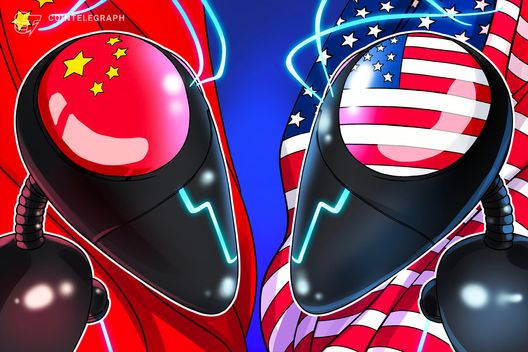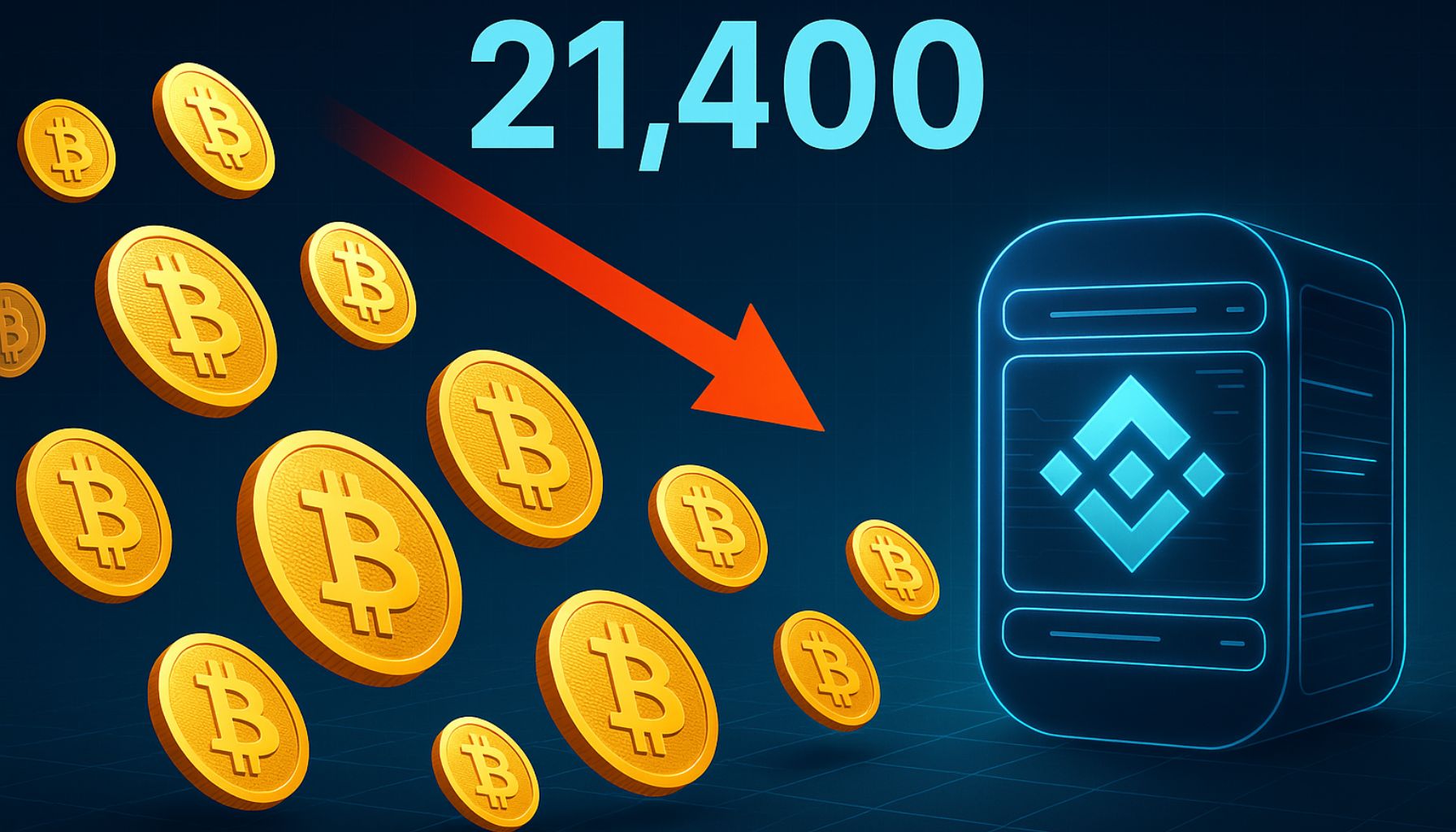
Opinion by: Joshua Chu, co-chair of the Hong Kong Web3 Association
Last week’s announcement of Hong Kong’s LEAP Digital Assets Policy Statement 2.0 was made with a lot anticipation and fanfare. The authorities of Hong Kong promised a complete regulatory framework that may unify licensing and “develop the suite of tokenised merchandise.”
Yet beneath the hype and visual maneuvers lies a much more consequential transfer: Beijing’s (the world’s second largest holder of crypto) announcement of its intention to liquidate confiscated digital currencies by way of Hong Kong’s licensed exchanges. These occasions, whereas seemingly separate, are literally elements of a rigorously orchestrated technique by China, designed to place Hong Kong because the dominant digital asset hub and China’s strategic market operator.
A technique of convergence: Hong Kong is poised to turn out to be the area’s digital asset hub. Still, it would additionally function the linchpin of China’s international ambitions: a crypto hedge, a market value car and a ahead command submit for PRC-crypto-liquidity.
Regulatory foundations
On the floor, Hong Kong’s LEAP coverage seems to be all of the headlines. A correct understanding of technique, nonetheless, calls for trying past the floor. The true energy of those coverage choices lies within the liquidity injection that China’s crypto-liquidation resolution will invariably create. This instrument will concurrently grant Hong Kong unprecedented affect over international digital asset markets.
The basis of Hong Kong’s regulatory framework will be traced again to 2022 with the passage of the Amendment of the Anti-Money Laundering and Counter-Terrorist Financing Ordinance (AMLO), which, after the Securities and Futures Commission had the chance to achieve adequate expertise below the earlier opt-in regime, formally introduced digital asset buying and selling platforms (VATPs) below their remit through the AMLO obligatory licensing regime. This vital transfer secured alignment with Financial Action Task Force (FATF) requirements and have become the primary cornerstone laws for digital property.
The subsequent vital laws that happened was the Stablecoin Ordinance, set to start on Aug. 1, 2025, establishing a devoted licensing regime for fiat-referenced stablecoin issuers. The Hong Kong Monetary Authority (HKMA) oversees this regime, mandating one-to-one reserves, strong redemption mechanisms and rigorous danger controls.
In June 2025, introducing the LEAP Digital Assets Policy Statement 2.0 additional developed Hong Kong’s framework. LEAP unifies licensing, expands the suite of tokenized merchandise and advances use instances of cross-sector collaboration and expertise growth. Going past FATF-directed regulatory tinkering, LEAP aspires to be the structure that may “scale Hong Kong to new heights of world digital asset management” and sign Hong Kong’s readiness to embrace the way forward for digital property.
Laws and rules alone can’t, nonetheless, command markets. It is liquidity that may resolve the day.
China’s resolution to channel confiscated digital property by way of Hong Kong’s licensed VATP will strategically inject actual, tangible liquidity into the ecosystem. This is not an FATF compliance guidelines train — it’s a strategic lever. Through enabling managed liquidation, Hong Kong stands to turn out to be a market value car able to quickly modulating provide and demand, one other key driving issue of digital asset worth.
Liquidity as a weapon
Liquidity is the lifeblood of any market. Without liquidity, even probably the most refined market will falter. Just take a look at the London Stock Exchange.
Related: Which international locations secretly personal probably the most Bitcoin — past the US and China
Under China’s grand technique, in contrast to the United States, which holds an enormous Strategic Bitcoin Reserve and is positioned below a inflexible “hold-only” coverage, liquidity injected into Hong Kong’s exchanges will actively convert seized property into market liquidity. This setup will grant Hong Kong — and by extension China — the power to affect value, stabilize markets and reply to geopolitical pressures because it sees match.
Just as management of the uncommon earth metals gave China all of the playing cards within the newest rounds of commerce negotiation with the US, so too will management over crypto liquidity, successfully controlling the worth of the US’s newly minted crypto reserve.
This is a delicate, but profound, shift within the stability of energy. The skill of a single nation to manage liquidity flows is to manage market narratives and outcomes.
Implications and countermeasures
This grand technique essentially alters the stability of energy inside the cryptosphere. Hong Kong can have a decisive benefit in absorbing institutional capital and deepening market liquidity, leveraging its distinctive place because the conduit for the PRC’s crypto liquidation strikes.
At the identical time, by scaling “Hong Kong to new heights of world digital asset management,” China can have a strong geopolitical device in its palms, capable of management international cryptocurrency valuations by way of calculated market liquidity administration.
Meanwhile, the US will face a strategic dilemma: Should it proceed with a passive crypto stockpile with restricted or no market affect? Or ought to the US take into account new mechanisms to counterbalance Hong Kong’s rising management over crypto liquidity?
Understanding the dynamic on this interaction is necessary for market individuals, attorneys, danger practitioners and lawmakers. After all, compliance frameworks should be adjusted to deal with elevated scrutiny and dangers related to liquidity-driven market actions. In distinction, danger administration methods anticipating volatility stemming from strategic liquidity flows and a eager understanding of how liquidity management will form the market narratives and outcomes are key.
The key to the Web3 markets is subsequently liquidity and data. While Hong Kong’s LEAP coverage garners all of the media consideration, the true chess transfer lies in China’s crypto liquidation and injection coverage. This injection will flip Hong Kong right into a dynamic market value car, able to wielding liquidity as a weapon that few jurisdictions can match.
Contrast this with the US, which is constrained by a inflexible “hold-only” reserve coverage, and it lacks the flexibleness to affect market liquidity or reply successfully to cost volatility.
Singapore, which, regardless of a mature regulatory framework, faces limitations in market scale, and Dubai, although formidable, struggles with fragmented regulatory remits and excessive operational prices that hinder fast scaling. Hong Kong “holds all of the playing cards.” Only this time, China can also be making all of the liquidity playing cards.
As such, town’s distinctive mixture of mature regulatory framework, direct entry to the world’s second-largest crypto holdings and the power to deploy such liquidity strategically at their discretion grants it an unparalleled excessive floor within the Web3 ecosystem. Hong Kong can modulate international crypto costs in actual time, appeal to institutional capital and foster innovation inside a steady, investor-friendly setting.
Liquidity is the final word leverage on this contest, and Hong Kong holds the swap. Understanding this layered technique is crucial for many who search to navigate the quickly evolving digital asset panorama with readability and foresight. Those who fail will discover themselves outmaneuvered.
Opinion by: Joshua Chu, co-chair of the Hong Kong Web3 Association.
This article is for basic info functions and isn’t supposed to be and shouldn’t be taken as authorized or funding recommendation. The views, ideas, and opinions expressed listed below are the creator’s alone and don’t essentially replicate or symbolize the views and opinions of Cointelegraph.











